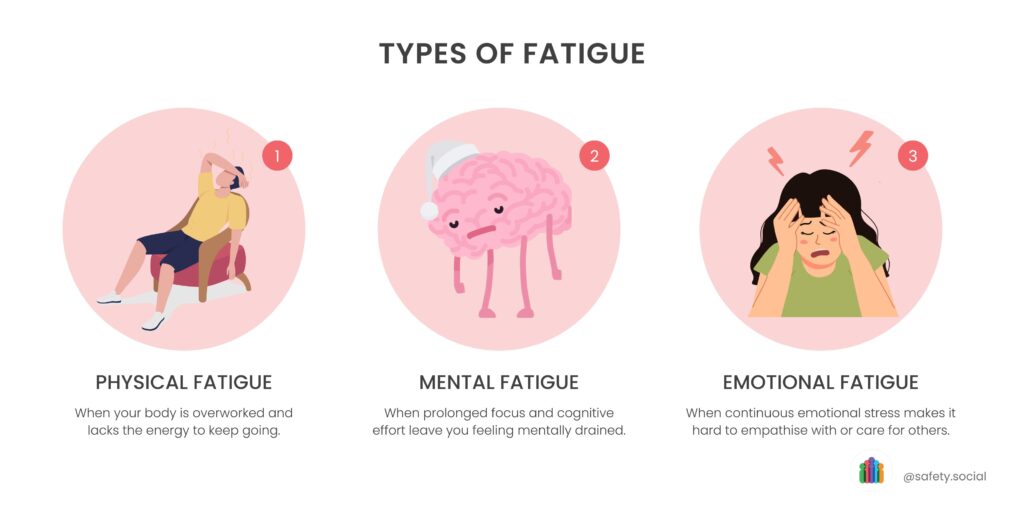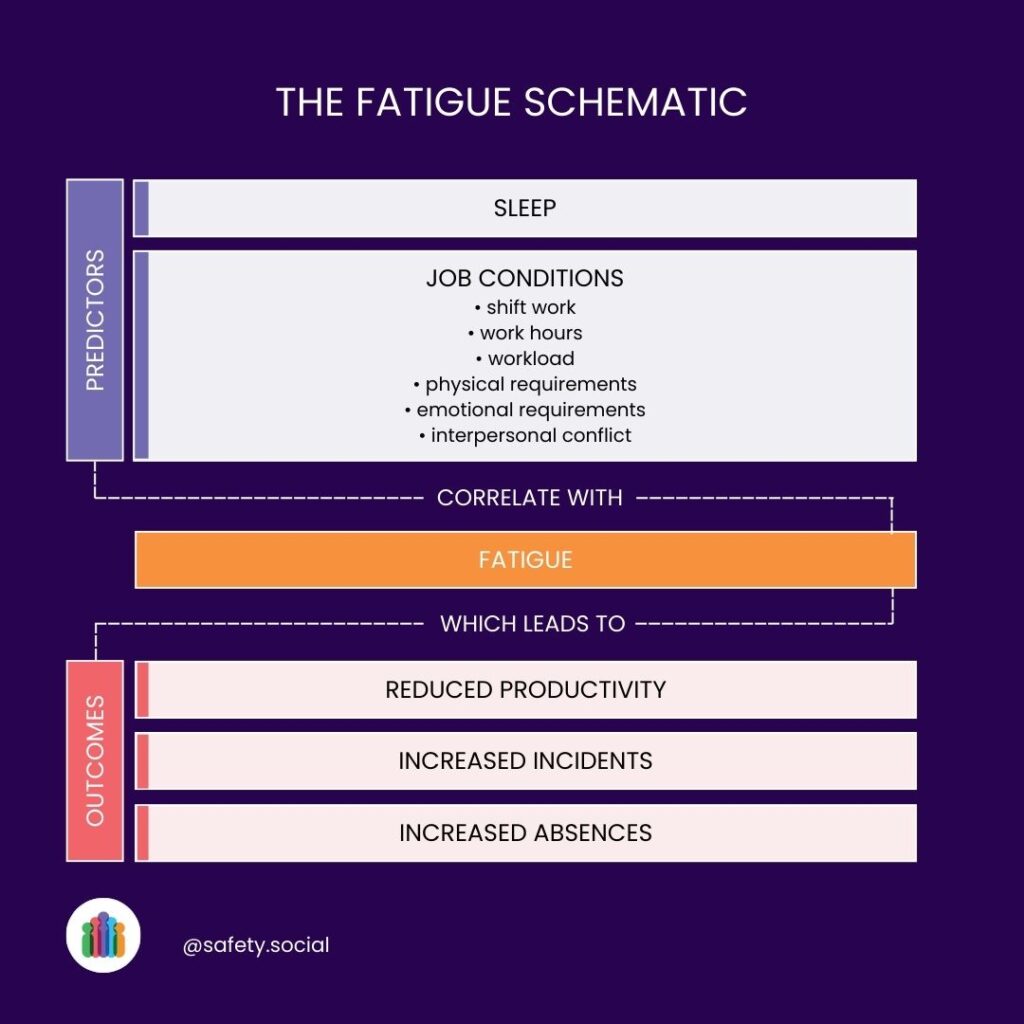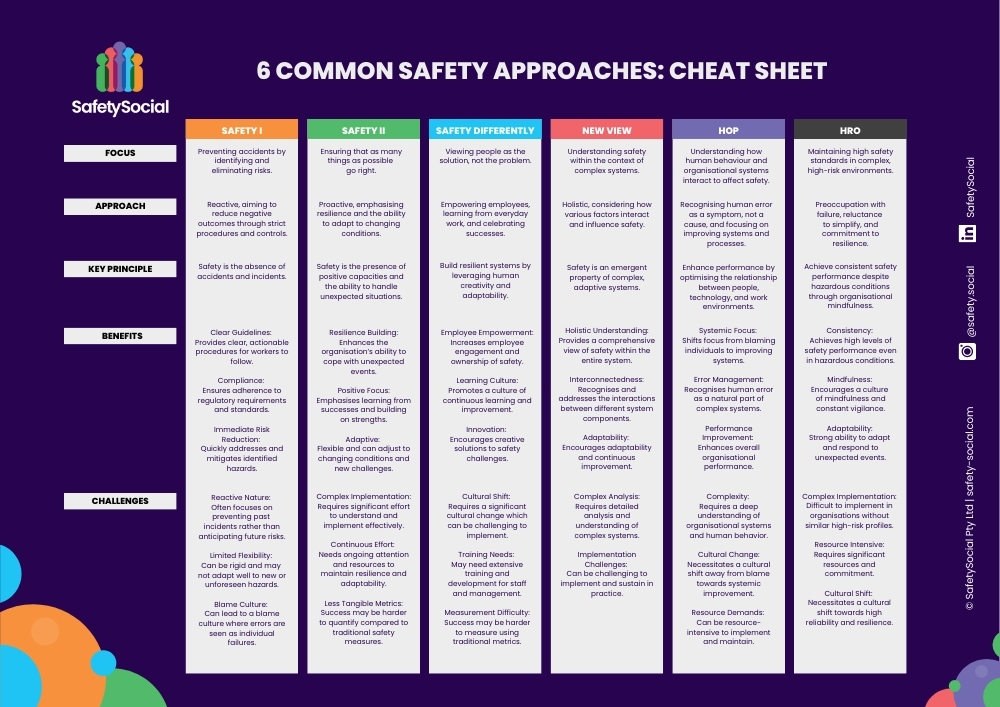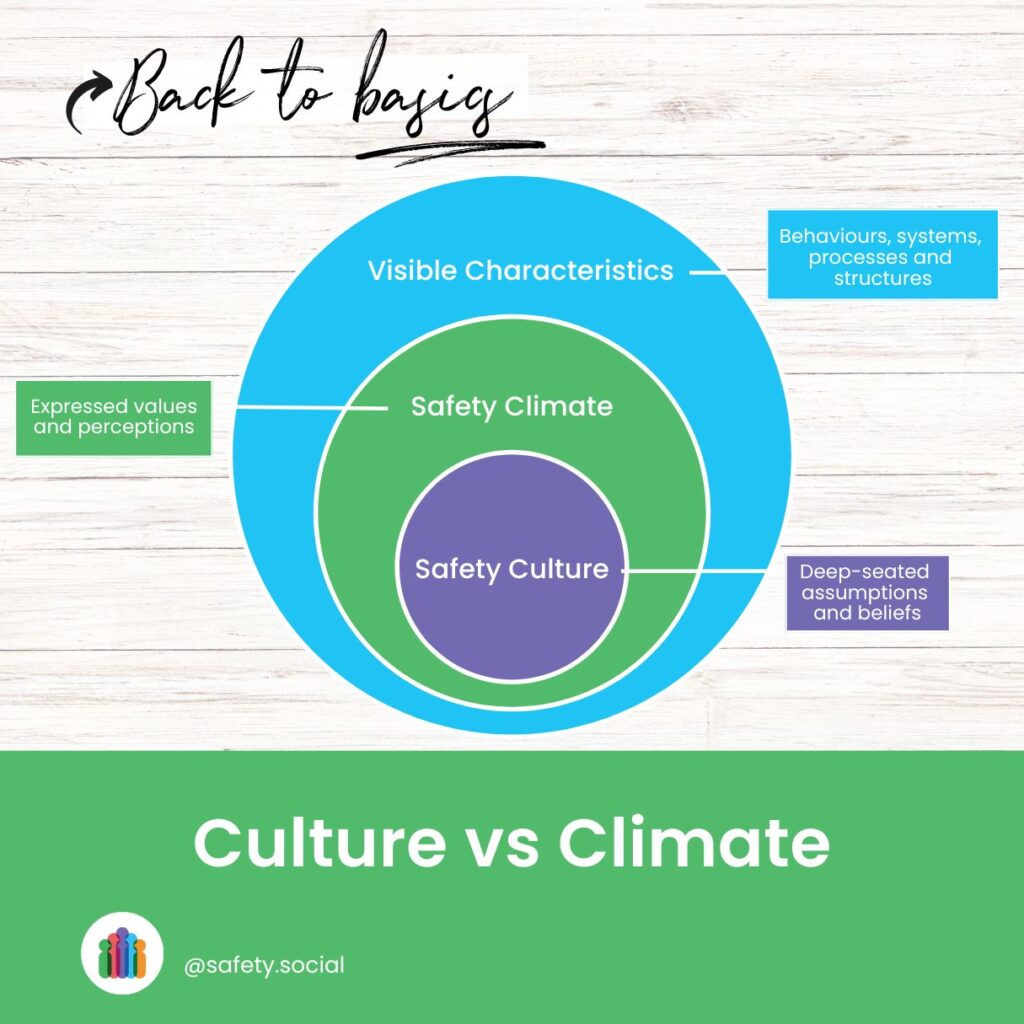
Ever feel completely drained after a long day at work, both physically and mentally? That’s fatigue. It’s that feeling of exhaustion that stops you from functioning safely and effectively. It’s not just about being tired; work-related fatigue can affect your physical, mental, and emotional wellbeing, and it can have long-term health effects too.
In this post, we explore the causes of work-related fatigue, how it increases worker risk and ways to tackle fatigue for a safer workplace.
- What Causes Work-Related Fatigue?
- How Fatigue Increases Risk
- The Fatigue Schematic
- How to Tackle Worker Fatigue
- Wrapping It Up
What Causes Work-Related Fatigue?
There are several factors that can lead to fatigue at work:
- Long working hours: Working extended hours without proper rest can lead to physical and mental burnout.
- Intense effort: Tasks that require a lot of concentration or physical effort can quickly drain your energy.
- Disrupted sleep patterns: Working night shifts or irregular hours can mess with your body’s natural sleep cycle, leaving you feeling tired and sluggish.

Fatigue comes in three main types:
- Physical Fatigue: When your body is overworked and lacks the energy to keep going.
- Mental Fatigue: When prolonged focus and cognitive effort leave you feeling mentally drained.
- Emotional Fatigue: When continuous emotional stress makes it hard to empathise with or care for others.
How Fatigue Increases Risk
Fatigue can significantly increase the risk of workplace incidents by impairing worker’s physical, cognitive and emotional abilities. Here’s how.
Physical Tasks
When workers are physically fatigued, their bodies simply don’t function at peak efficiency. This can lead to:
- Slower Reaction Times: Fatigued muscles and minds take longer to respond, which can be critical in environments where quick reflexes are necessary to avoid incident or injury.
- Reduced Strength and Endurance: Physical tasks that were manageable at the start of a shift can become difficult, increasing the likelihood of mistakes or mishaps.
- Coordination Issues: Fatigue affects motor skills, making it harder to perform tasks that require precision, such as operating machinery or handling hazardous materials.
Cognitive Tasks
Mental fatigue can be just as dangerous as physical fatigue. It can result in:
- Poor Decision-Making: A tired brain is less capable of processing information and making sound judgments. This can lead to errors in critical thinking and problem-solving.
- Decreased Concentration: Fatigued workers may find it difficult to focus on tasks, increasing the chances of overlooking important details or making careless mistakes.
- Memory Lapses: Fatigue can impair short-term memory, making it hard to remember instructions or important safety protocols.
Emotional Tasks
Emotional fatigue can affect how workers interact with each other and handle stress:
- Reduced Empathy: Fatigue can make it hard for workers to connect with their colleagues, potentially leading to misunderstandings and conflicts.
- Lowered Patience: Tired workers may have less patience and tolerance, which can strain team dynamics and impact overall morale.
- Stress Management: Emotional fatigue makes it difficult to cope with workplace stress, which can exacerbate feelings of burnout and lead to mental health issues.
The Fatigue Schematic
The Fatigue Schematic is a helpful snapshot that breaks down the key predictors of fatigue and the resulting outcomes that can affect you and your team.

It demonstrates how the predictors of fatigue (sleep and job conditions) lead to unwanted outcomes such as reduced productivity, increased incidents and absences.
While employers can’t control the quality of sleep their worker’s get; they can look to improve job conditions (i.e. shift work, long hours, heavy workload, physical and emotional demands, and interpersonal conflicts).
How to Tackle Worker Fatigue
So, what can be done to combat fatigue? Here are some practical steps:
- Review and Adjust Job Conditions: Take a close look at your job conditions. Are you dealing with shift work, long hours, a heavy workload, physical and emotional demands, or interpersonal conflicts? These are all key predictors of fatigue. Make adjustments where necessary to ensure tasks and schedules are not overly demanding. This could mean redistributing the workload, offering flexible schedules, or reducing shift lengths to help prevent fatigue from setting in.
- Provide Regular Training: Educate your team about the importance of managing their own fatigue. Training should cover how to spot the signs of fatigue and strategies to deal with it. Encourage workers to take breaks, get adequate sleep, and maintain a healthy work-life balance.
- Implement Effective Policies and Practices: Develop and enforce policies aimed at managing fatigue-related risks. This might include setting limits on working hours, encouraging regular breaks, promoting a healthy work environment, and offering support for stress management and conflict resolution. Make sure employees have access to resources that can help them manage both the physical and emotional demands of their job.
Wrapping It Up
Fatigue is more than just feeling tired. It can affect your physical, mental, and emotional wellbeing, and can have long-term health effects too.
Fatigue at work is often linked to sleep quality and job conditions like shift work, long hours, heavy workloads, physical demands, emotional stress, and conflicts with colleagues. The fallout? Reduced productivity, more workplace incidents and higher absenteeism.
To tackle these issues, it’s crucial to review and adjust job conditions, train workers to recognise and manage fatigue, and implement solid policies to reduce fatigue-related risks. Doing so will go a long way to creating a safer, healthier, and more productive workplace for everyone..
Want more curated content like this straight to your inbox? Subscribe to our newsletter. 👇



